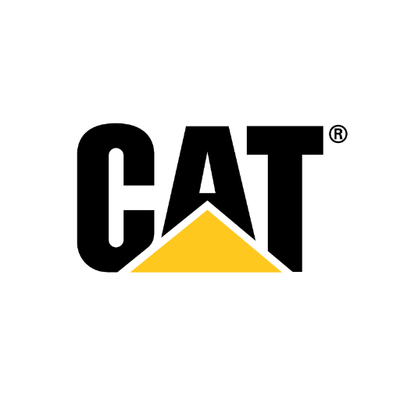Do you embody the four key leadership skills for safety excellence?Safety incidents are the result of organizational culture, and culture is heavily influenced by leadership behavior. So, to create a strong safety culture, you must address leadership behavior.
An effective leader is one who earns the voluntary and passionate involvement of those he/she leads. They lead by example and have a strong, positive influence on those around them. But what does it really take to be an effective safety leader?
In 2012 Caterpillar Safety Services launched a comprehensive research team to determine the answer to that question. With collaboration from behavioral assessment experts Development Dimensions International (DDI), the team discerned four critical skills a leader must demonstrate with a high degree of competence that lead to safety excellence. DDI Chief Scientist, Dr. Evan Sinar, has statistically validated these findings through rigorous data analysis.
We defined safety excellence as a team of people with low leading indicator outcomes in the areas of effective safety meetings, near miss, hazard correction and identification, incident investigation, and inspection processes. Thus far, we have surveyed nearly 1000 employees, front-line leaders, middle managers, and top managers in the industries of construction, energy, forestry and manufacturing with 133 questions about what they had observed in their immediate supervisor. We scientifically correlated those responses to the leading indicator outcomes listed above. The findings have provided us with the first ever statistically validated results of exactly what it takes to lead others to work most safely.
Our research has revealed four domains and fourteen elements of safety leadership. To produce a safer workplace, leaders must drive accountability, create connectivity, demonstrate credible consciousness, and build trust. Our sample assessed 189 leaders (54% front line, 26% in middle management, and 20% top leaders). The data reveals some interesting information about safety leadership.
- When a leader demonstrates the four domains in high degree, employees work more safely.
- Leaders who have more than nine direct reports experience lower performance in leading indicator outcomes.
- The domain of accountability provides the strongest link to leading indicator performance among the four domains.
- Building trust is the highest predictor of reduced incidents and injuries and the success of any subsequent investigations.
- The top three elements driving leading indicator outcomes are defined expectations, integrating safety into the business operation, and sharing relevant safety information with others, and showed a 15-20% stronger performance over the other elements.
- Near miss and hazard identification processes were the two leading indicator outcomes most impacted by safety leader behaviors.
- Higher level leaders generally outperformed front-line leaders. This is very interesting considering the front line is where most incidents occur.
The Four Domains and Fourteen Elements
Domain #1: Build accountability. Within the three main types of accountability – personal, team, and organizational – we focused on team accountability with the main question being “What does it take for a leader to create an environment whereby all individuals voluntarily and accurately work safely, no matter who is watching?” We validated five core elements.
- Clearly define expectations. The effective safety leader ensures that every person who reports to him/her knows exactly what is expected of them to keep themselves and others safe. This element provides the strongest statistical link to the leading indicators of all fourteen elements.
- Train to ensure competence. The effective safety leader ensures that every direct report knows how to do their work safely and accurately.
- Provide necessary resources. The effective safety leader provides all direct reports with the resources of time, supplies, equipment, labor and budget in order to work safely.
- Measure the accuracy of execution. The effective safety leader follows up with every direct report to ensure accurate execution of all defined expectations.
- Deliver appropriate feedback. The effective leader frequently recognizes safe work and coaches to improve unsafe work relative to defined expectations.
Domain #2: Create connectivity. Connectivity involves integrating safety into the business operation. When a leader creates connectivity, everyone on the team understands that an effective business operation is a safe operation. There is no separation between safety, operations, budgeting, quality and customer service – they are all integrated into an effective business and must all be accomplished to a high degree of quality. Employees are involved in identifying and solving safety problems and in the creation and maintenance of a strong safety culture. Every team member is kept informed of all pertinent information enabling them to work safely and productively at all times. There are three elements of connectivity.
- Involve employees. The effective leader directs, creates and facilitates employee involvement in the safety process.
- Share information. The effective leader openly shares relevant safety information with direct reports.
- Integrate safety. The effective leader explains the relevance of safety to effective business operations, integrates safety into the business conversation and explains the ‘why’ behind the ‘what.’
Domain #3: Demonstrate credible safety consciousness. Credible safety consciousness is believable, reliable and convincing awareness and understanding of what it takes to be safe. When a leader demonstrates credible safety consciousness, it is apparent to others that he/she understands the safety processes within the team, has the necessary information to make informed safety decisions, effectively appraises risks where it exists, internalizes safety concepts and applies them personally, and continually learns and grows in their ability to lead a culture of safety excellence. There are two elements of credible consciousness.
- The effective safety leader knows what needs to be done to keep everyone safe.
- The decisions and choices made by the effective safety leader make it a safer place to work.
Domain 4 – Build trust. Trust is reliance on the integrity, strength, ability and surety of a person or thing. It is confident expectation of something and involves authenticity, integrity, genuineness, transparency and sincerity. There are four elements of trust.
- Care for the safety of others. The effective leader demonstrates concern for the safety of others.
- Value safety. The effective leader demonstrates that safety is a core principle that guides his/her decisions and behaviors.
- Demonstrate openness. The effective leader is accessible and available to discuss safety concerns and fosters an environment of transparency and free-flowing communication.
- Interact effectively. The effective leader communicates in a way that enables others to rely upon them to respond and behave in a manner that builds confidence and surety in relationships.
With this new safety leadership model developed by Caterpillar Safety Services, we now have a statistically validated approach to assessing and improving safety leadership. When a leader drives accountability, creates connectivity, demonstrates credible consciousness and builds trust, safety excellence is the result.
Written by David Crouch with Caterpillar Safety Services.
.png?width=190&name=IPA%20Logo%20Transparent%20(Hi-Res).png)






